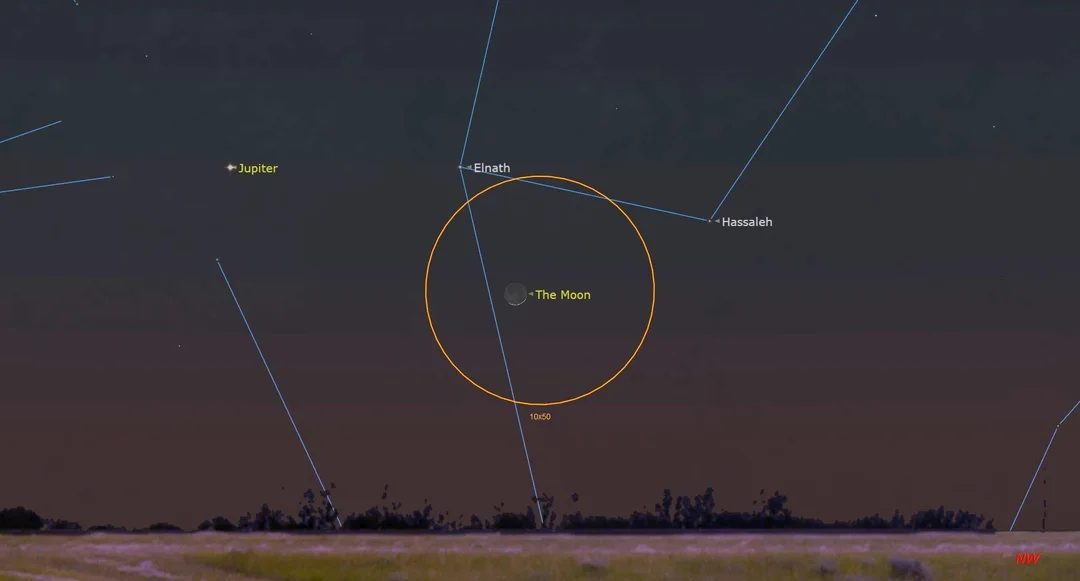
Jupiter and Crescent Moon Rendezvous: A Last Chance Skywatching Event You Won’t Want to Miss!
Get ready for a celestial spectacle! Tonight, Jupiter, the giant of our solar system, will make its final evening appearance of the year, pairing up with a remarkably thin, newborn crescent moon. This rare astronomical event promises a stunning visual display for skywatchers, but timing and location are key.
As reported by Space.com, the razor-thin crescent moon, only about 1% illuminated and just 24 hours past its new phase, will be a challenge to spot in the sun's afterglow. Jupiter, appearing as a bright, white dot, will be nearby, adding to the allure of this evening rendezvous. Don't miss out on the last Jupiter-Moon conjunction of 2025.

Prime Viewing Time: The best time to witness this cosmic dance is shortly after sunset. As shared on Jersey's Best, look towards the western sky around 8:45 to 9 PM on May 28. First locate the moon, and Jupiter will be positioned below.
How to Spot Them: According to Space.com's skywatching columnist, Joe Rao, to maximize your chances of seeing both celestial bodies, find a location with a clear, unobstructed view of the west-northwest horizon. About thirty minutes after sunset, focus your gaze just above the point where the sun dipped below the horizon. The moon will be low, no more than 6.5 degrees above the horizon, with Jupiter a mere 5 degrees higher.
Binoculars can be your best friend in this situation, accentuating your chances of spotting them!
Why This Matters: This is a fleeting opportunity. Jupiter will soon disappear into the sunset glow, not to be seen again until mid-July when it transitions to the early morning sky. However, stargazers can look forward to a dazzling predawn display midsummer, as Jupiter partners with Venus in early August.
Tomorrow's Viewing: If you miss tonight's pairing, you might have a better chance tomorrow (Wednesday, May 28). The moon will be slightly wider (5% illuminated) and higher (17 degrees) above the west-northwest horizon half an hour after sunset, making it easier to spot.

Looking Ahead: While Jupiter bids farewell to the evening sky, the Vera Rubin Observatory is gearing up for its first observations this summer. With its massive camera, capable of capturing the entire sky in just a few days, it will undoubtedly reveal even more astronomical wonders, mentioned on Jersey's Best.
Don’t miss this final chance to witness Jupiter’s evening brilliance alongside the delicate crescent moon. Will you be venturing out to catch this celestial sight? Share your observations and thoughts in the comments below!